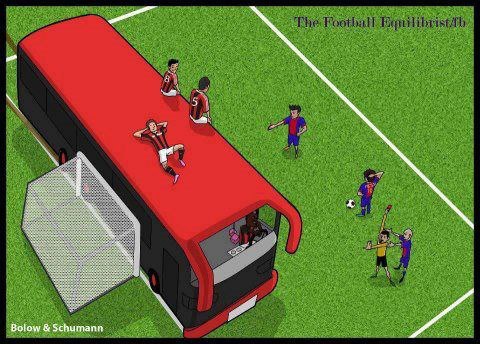You can, but what after that?
When an attack-minded free-flowing football team plays against another that parks the bus (plays only with the intention of not allowing the other team to score), the neutrals (those who don't support either team) hate watching the game. They hate it because the team that decides to sit back and defend is playing with a mindset of getting it over with. The team wants the game to get over as quickly as possible. They will disrupt play, waste time in restarting the game whenever the ball goes out of play and make no attempt of their own to mount an attack. They might achieve the desired result (a clean sheet) at the end of the game. But they will let the people who came to watch with certain expectations down. They will fail to make a mark (a positive one) on the audience (other than some of their own fans).
Whereas, if the team plays a free-flowing and attacking game of football, they allow themselves to be vulnerable to defeat which will not sit well with their established fan-base. But the spirit and the passion might endear them to the neutral audience.
This is the dilemma most products face. Whether to get all actions at the product end over with as quickly and efficiently as possible, pleasing their existing customers, or to show passion and creativity in introducing new features in an attempt to acquire new users (but risk losing existing ones).
Seth Godin explains the pitfalls of choosing the first option and makes a good case for choosing the second in this post.
Stop thinking in the short term and start a journey with your customers instead.





CONVERSATION